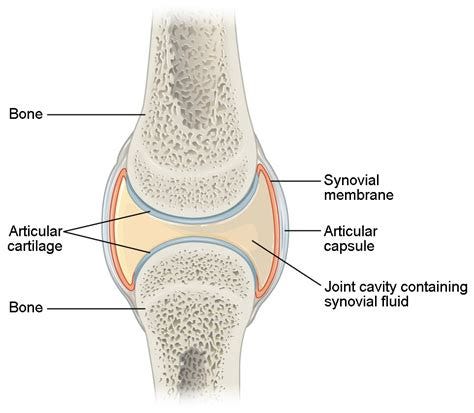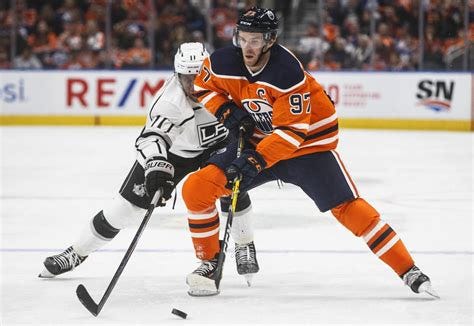Establishing Point B: Joint Function and Health
The Importance of Space and Time at the joint level.
In the previous article Programming: Establishing Point B, it was articulated that there are four fundamental behaviours that all athletes should possess to help ensure that high performance is achieved at the level of competition.
These qualities are:
A necessary high level of joint function
Have a required absolute strength capacity (relative to the level of competition)
A high level of speed-strength (rate of force discharge capacity)
The ability to generate a necessary level of reactive strength (stiffness, load bearing capacity, force absorption and dissipation)
Our last article focused on Absolute strength and how to acquire it. In this article we will discuss the attainment of joint function.
What is Joint Function?
Operationally defined, having a high level of joint function refers to having enough macro range of motion in the external environment but also possessing enough relative (micro) motion in the internal environment between two bony elements. To continue, it is imperative that an athlete have enough available range of motion at the joint level to accomplish relevant movement tasks that are required within the external environment with a high level of success. It is evident in this definition that there is a macro quantity of motion that each of an athlete’s joints should have and that this is directly correlated to the available relative motion that exists between the bony components of the joint.
It is imperative that an athlete have enough available range of motion at the joint level to accomplish relevant movement tasks that are required within the external environment with a high level of success.
For example, in the sport of hockey, there are movement requirements that will dictate a macro quantity of range of motion at the athletes hip joints. Obviously being a sport that does require multi-planar motion of the hip this can be viewed from the perspective of different ranges. These requirements can be determined based on the athletes stature which would include things like bone length, the morphology of the joint and soft tissue length, player position and skating posture amongst others.
Optimal Joint Function in Hockey
To demonstrate, the basic movement requirements during skating forward acceleration the hip will start from a position of flexion and then moves rapidly into hip extension, abduction and external rotation. Once the athlete is up to speed the hip requirements change in that during the full skating stride the hip will be required to start in a position of deeper hip flexion and move into further abduction with internal rotation. There are other major skating techniques such as crossovers, pivots, transitions and backwards skating that will all have requirements of the hip to be performed at a high level. These macro requirements will be dependent on the available relative motion that exists between the femoral head and the acetabulum. Keep in mind, that in addition to these range requirements there are strength requirements that determine the behaviour of each range.
Even though we can quantify ranges that a joint should move into during sport, joints never have static positions or move exactly the same on every repetition. Although outwardly it may look like each range is replicated over and over again (and in certain instances it may be) it is far more likely that it isn’t. Realistically, the range will fall into a ‘zone’ which allows the athlete to perform the same performance outcome with success. This movement zone is an important concept as it means that when we look at joint function of an athlete, we understand the the necessary hip flexion that is required in the beginning of stride position occurs in a zone. From the lens of Dynamic Systems Theory this would be qualified as an attractor - in this case one of hip flexion. Defined, an attractor “is a set of states toward which a system tends to evolve, for a wide variety of starting conditions of the system”1
The starting conditions can be conceptualized from an internal perspective. The ability of the joint to efficiently move into the ‘zone’ is dependent on its internal state(s) that allow for relative bony motion to occur that produces global movement.
A Joint is a Complex System
Looking at joint function in this way allows the interpretation that each joint is a complex system in and of itself (existing within a larger system) and like any system there are intricate relationships among the components of the system that have effects on system behaviour as a whole.
Joint Function is conceptualized as the ability to possess the required range of motion externally that allows for movement in necessary zones that allows for successful performance. The zone can be thought of as the attractor that allows the system to achieve an outcome. This is dependent on the starting conditions of the joint which relates to its current internal state.
The Anatomy of Joint Function
A joint is any place where adjacent bones or bone and cartilage come together (articulate with each other) to form a connection. An appreciation of the complexities that are involved in human joint design may be gained by considering the nature of the bony components and the functions that the joints must serve.
A joint is any place where adjacent bones or bone and cartilage come together (articulate with each other) to form a connection.
Joint Classifications
Typically joints are classified both structurally and functionally. This is a bit arbitrary because it must be borne in mind that the overall structure of the joint and the nature of its components will determine its function, however the function that the joint may serve can lead to changes in its overall structure. We are well aware of this fact because up to this point we have come to know the implications of physical stresses and force and how that can lead to a “change” in function. As a result, changes in the thickness, fiber orientation, and even composition of the tissues forming the articulation depend to a large extent on the forces and stresses that are placed on it, which really illustrates the dynamic nature of the human articular system.
Synovial Joints
All synovial joints are constructed in a similar fashion and all have the same features including cartilage that covers the bony ends, a joint cavity within which exists the synovium and synovial fluid, and an innervation and thus a feedback mechanism to the CNS which is how the articulation can help regulate output behaviour based on its inputs. The typification of all synovial articulations is the joint capsule that houses all of the above mentioned features.
Joint Capsule Anatomy
The joint capsule itself is composed of two layers, an outer layer called the stratum fibrosum and an inner layer called the stratum synovium. The stratum fibrosum otherwise known as the fibrous capsule and is the outer element of the capsule. The stratum fibrosum is poorly vascularized but richly innervated by joint receptors that allow for feedback of sensory signals to the CNS- the spinal cord, brain and cerebellum. The inner layer the stratum synovium is essentially the lining of the capsule and is highly vascular but less innervated. It is responsible for overall joint health and integrity.

Joints = SPACE
There is one significant characteristic of all synovial articulations that is never considered but is directly related to joint function, and that is - SPACE. Loosely defined it is the ‘area’ between two articulating bones, as constrained by the anatomical boundaries of connective tissue. Therefore, more specifically it can be termed “capsular space”. All joints will have a requisite capsular space.
All joints are governed by this space, as space determines the starting conditions for global movement and the starting conditions determine successful movement outcomes in the external environment (level of competition).
Joint Space is Dynamic
Conceptually space is a dynamic quantity - it gan be acquired and it can be taken away depending on the quality of the internal environment. For example, as the internal environment degrades and the amount of space changes (becomes smaller) it will have large effects on the ability of the joint to engage the external environment effectively enough and performance will decline.
As a result, the maintenance (or acquisition) of an amount of capsular space is necessary for all athletes to effectively establish global movement attractors that allow for adaptability within those zones.
Space at the Joint Level is a Trainable Quality
Capsular space then is a trainable quality of all articulations. To train it appropriately, the coach/therapist must understand where in the movement zone the articulation is deficient and must acquire access to the capsular space that would improve access to that zone.
As an example, a hockey athlete is striding short, with less access to the zone of abduction and internal rotation of the hip. Performance declines, speed decreases, the athlete becomes less successful because the basin of attraction is not deep enough. This requires a change of internal state at the capsular space level by acquiring more access to the space that allows for better relative bony motion between the femur and acetabulum that precipitates improved global movement into the zone (abduction and IR). Changing the initial starting conditions of the internal environment ultimately changes the behaviour of the system.
Training to acquire capsular space is done using the means of isometric training both on the progressive and regressive sides of the joint. This is done using Maximal Effort Method.
Joint Function at the Level of Competition
One of the fundamentals of all sports is the ability to understand space and how that relates to time. Offensively teams and individuals are trying to create space against a defender to increase time to have an opportunity to score. Conversely on the defensive side athletes want to take space away to reduce time and minimize scoring chances against.
It is hopefully clear that this concept occurs at the joint level as well and it is at this level where competitive advantages lie. Those athletes that have a high amount of joint function have access to joint space at a capsular level and therefore have an increase in time to move into a zone to accomplish a motor task. Space dictates time and as a result of having access to more usable space at the joint this athlete can get into movement zones faster and with greater access than his competition. This ability can manifest in many ways by the athlete using speed, strength or body position to attack or defend using space.
Having worked with numerous hockey athletes, it is not a coincidence that the athletes with the greatest amount of capsular space and thus, the highest level of joint function of the spine, hips, knees and ankles are the elites at manipulating space and time.
Absolute posts that relate to this post
Programming: Establishing Point A
Programming: Establishing Point B
Stagnation in Sport Performance
Accommodation: A New Perspective
Avoiding Stagnation: Minimizing the Effect of Biological Accommodation.
FRS Internal Strength Training Model
Become a Certified Internal Strength Coach
https://mathworld.wolfram.com/Attractor.html





Love the idea of time-space concept, and also time is relative. If one can create more space (joint work space in this case), one will have more time to do whatever they want (movement) in the timeframe which were created by their own space